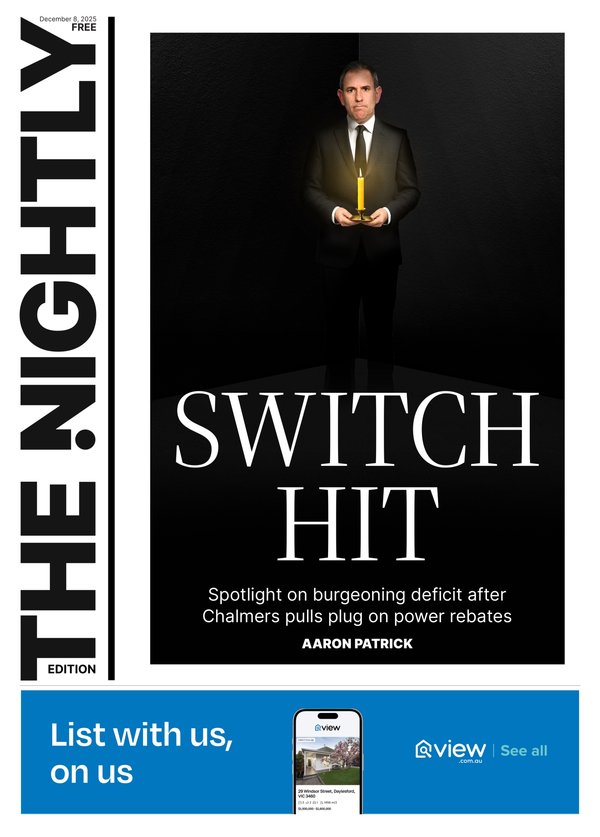The New York Times: Investors brace for high-risk, high-reward Trump market

Markets abhor uncertainty. That bit of Wall Street wisdom helps explain their ebb and flow since Donald Trump’s victory on Election Day, and even earlier.
Stocks and bond yields began rising early in October, when Wall Street concluded that Trump would win. The market surge accelerated after he did.
Yet for the markets, uncertainty hasn’t vanished. It’s merely coming from another direction. Because Trump’s approach to politics and economics is so disruptive and unconventional, markets have been straining to digest the implications of the power transfer in Washington, switching erratically between elation, confusion and occasional bouts of high anxiety.
Sign up to The Nightly's newsletters.
Get the first look at the digital newspaper, curated daily stories and breaking headlines delivered to your inbox.
By continuing you agree to our Terms and Privacy Policy.Aspects of the Trump platform are balm for the markets. He promises lower corporate taxes and less regulation. Those assurances are being widely interpreted as a recipe for fat company profits and a prosperous stock market. The president-elect is also expected to try to extend tax cuts that he signed into law in 2017 and that expire at the end of 2025. Over the short term, these measures are expected to stimulate economic growth.
But not all of his program is positive for growth. Trump is a self-described “tariff man,” calling for sharply increased tariffs on China and lesser but substantial levies on all other trading nations. Furthermore, he has promised a drastic reduction in immigration and a tsunami of deportations — a disaster for thousands of families and a move that, in cold financial terms, would reduce the supply of labour in the United States. Textbook economics tells us that adding tariffs and reducing the workforce could slow the economy and spur inflation.
Some companies might well benefit from these specific policies. Stocks of private prison firms like Geo and CoreCivic, which can build and operate temporary detention centres, have risen with the president-elect’s fortunes, and shares of smaller domestic companies with little international revenue jumped after the election. Also rising, companies that provide services to dentists. (More on that later.)
But the S&P 500 has given up ground and bond yields have jumped since the initial election buoyancy. Processing the disparate policy signals from the new administration and incorporating them into broader views about profits and interest rates is no simple matter. No wonder the markets are struggling to make sense of it all.
There’s always uncertainty with a new administration. But as Lee Ferridge, head of macro strategy for North America at State Street, the financial services giant, put it in an interview this past week, the new administration, with its call for tariffs and deportations, is something else.
“I think the issue is the policies are just so much more dramatic than any other policies that we’ve talked about historically,” he said. Dramatic, extreme, unconventional? Pick a word that suits. The United States is heading into a new version of Trump World, and life will be different.
A widening deficit
The various Trump domestic programs are likely to widen the already gaping federal budget deficit, which in itself could be inflationary and could be disruptive for the bond market. This is a monumental problem, and it’s complicated.
First, tariffs would raise some money but not enough to make up for the revenue reductions from the tax cuts endorsed by Trump, nonpartisan analysts say. Compared with the size of the economy — actually, as a fraction of annual gross domestic product — this year’s deficit is larger than it has ever been in a period without a war or a major crisis: more than 6% and rising. The total U.S. debt is 123% of GDP, an extraordinarily large amount. And Trump’s fiscal policies seem likely to enlarge these numbers.
It’s certainly possible that major government spending cuts will result from Trump’s new, unofficial Department of Government Efficiency, an advisory body headed by Elon Musk, the world’s richest man, and Vivek Ramaswamy, a former pharmaceutical executive who sought the Republican presidential nomination.
But more likely, I think, as long as military spending, Medicare and Social Security remain sacrosanct, as Trump promises, the commission’s recommendations won’t be enough to reverse the widening budget deficit.
But they could disrupt major sectors of the government and the economy if they are enacted. No one likes excessive government regulation, but the safety of food, drugs, water, airplane travel, investing, saving, driving and endless other activities has depended for decades on a fair amount of government regulation.
I see no point in speculating on matters that are opaque at the moment, but as the commission’s work gets underway, plenty of people in the markets will be doing just that, placing bets on stocks, bonds or options based on the latest musings of Musk or Ramaswamy. Expect volatility.
On balance, then, the budget deficit is likely to increase.
This outlook helps to account for a sharp rise in bond interest rates since September, when the Federal Reserve began trimming the short-term rates it controls. Fed officials have begun hinting that they are in no hurry to cut further. And the Trump policies could easily induce longer-term rates to keep rising.
Consumers and investors
That wouldn’t be good for consumers. Mortgages, whose rates are in the 7% range for 30-year loans, would become more expensive. In September, the Fed projected that the federal funds rate would drop to 3.4% by the end of next year, but reaching that goal has gotten harder.
With the expectation that U.S. interest rates won’t fall much further, the dollar has been strengthening — even though Trump says he favours a weaker dollar. If he goes ahead with his tariff promises, countries hit by the levies would have incentives to weaken their currencies further, to make their products more competitive. A stronger dollar helps Americans traveling abroad, but it hurts consumers at home and big corporations with international operations.
These are just a few examples of a complex analytical problem: The Trump victory may well be associated with a rising stock market because the market gains in most presidential administrations, but it isn’t a win-win for the markets. There are endless complications internationally, too, but let’s save that for another day.
Across a broad range of industries, change is coming. Health care stocks have been slumping. But shares of Henry Schein, a company on Long Island, New York, that supplies goods and equipment to dentists, as well as shares of two of its competitors, have been on fire in recent days. Why? Partly because Robert F. Kennedy Jr., whom Trump has nominated as secretary of the Department of Health and Human Services, wants to remove fluoride from drinking water, a move that may be bad for public health but great for the business side of dentistry. At the same time, cryptocurrencies are soaring, perhaps because Trump, Musk and other newly empowered figures say they favour lighter regulation, if any, of digital assets. Pronouncements from Trump associates will be swaying the markets.
For most investors, the heightened uncertainty has some essential implications. Stick to basics. Settle on a plan and stay with it. If you’re a long-term stock investor — perhaps using low-cost diversified index funds, as I do — try to remain in the market, even if it gets rough. Prepare by holding enough safe investments to pay the bills, and ride out any turbulence.
If interest rates rise, bond prices will fall as a function of bond math, so bond funds may lose money. Short-term Treasury bills, money-market funds and shorter-duration bonds may be a better bet for the cash you may need soon.
Fortunately for investors, Trump follows the stock market closely and wants it to rise. On this score, he has a great record. Aside from the havoc caused by the pandemic in 2020, the first Trump administration was excellent for the market. While he was in office, the S&P 500 returned more than 81 per cent, including dividends. It’s prospered under President Joe Biden, too, with a total return of more than 64 per cent.
Wherever the Trump administration takes us, remember that the market has done well under most presidents, regardless of party affiliation or policies. Companies like Nvidia, which makes the advanced chips that run artificial intelligence, are turning in strong performances. As long as corporate earnings accelerate, the bull market may manage to keep its swagger.
This article originally appeared in The New York Times.
© 2024 The New York Times Company
Originally published on The New York Times
